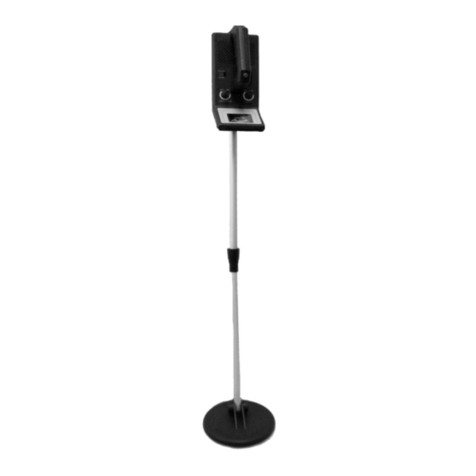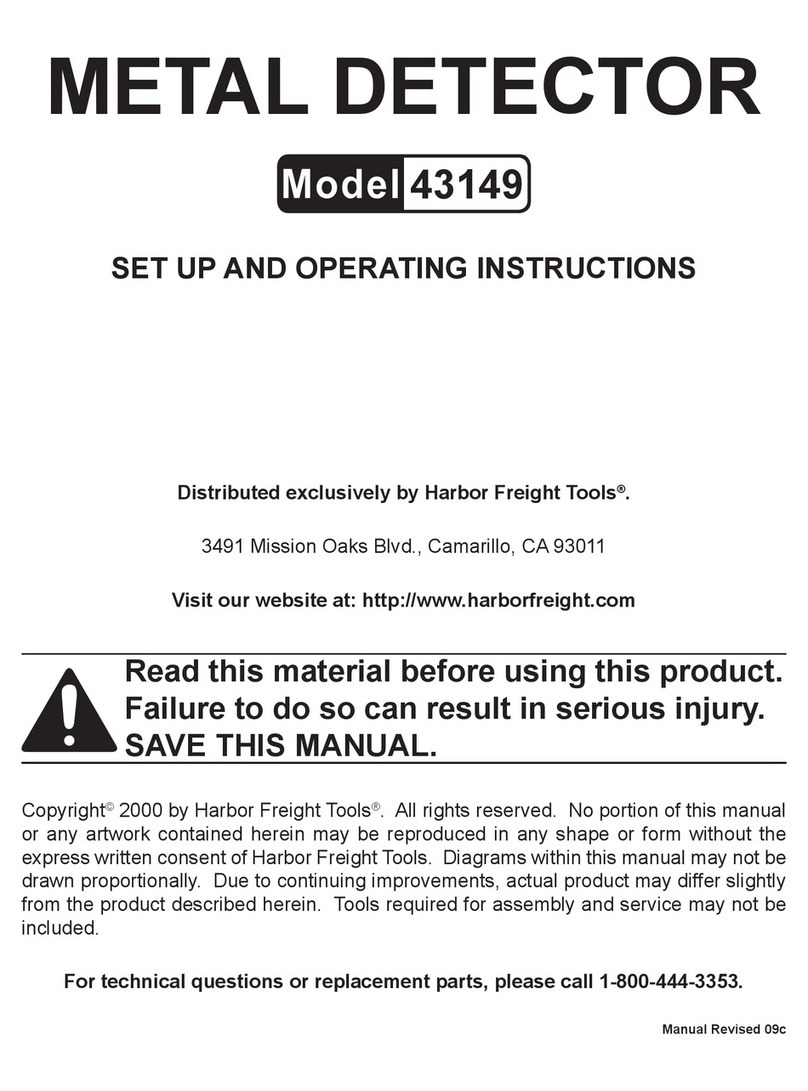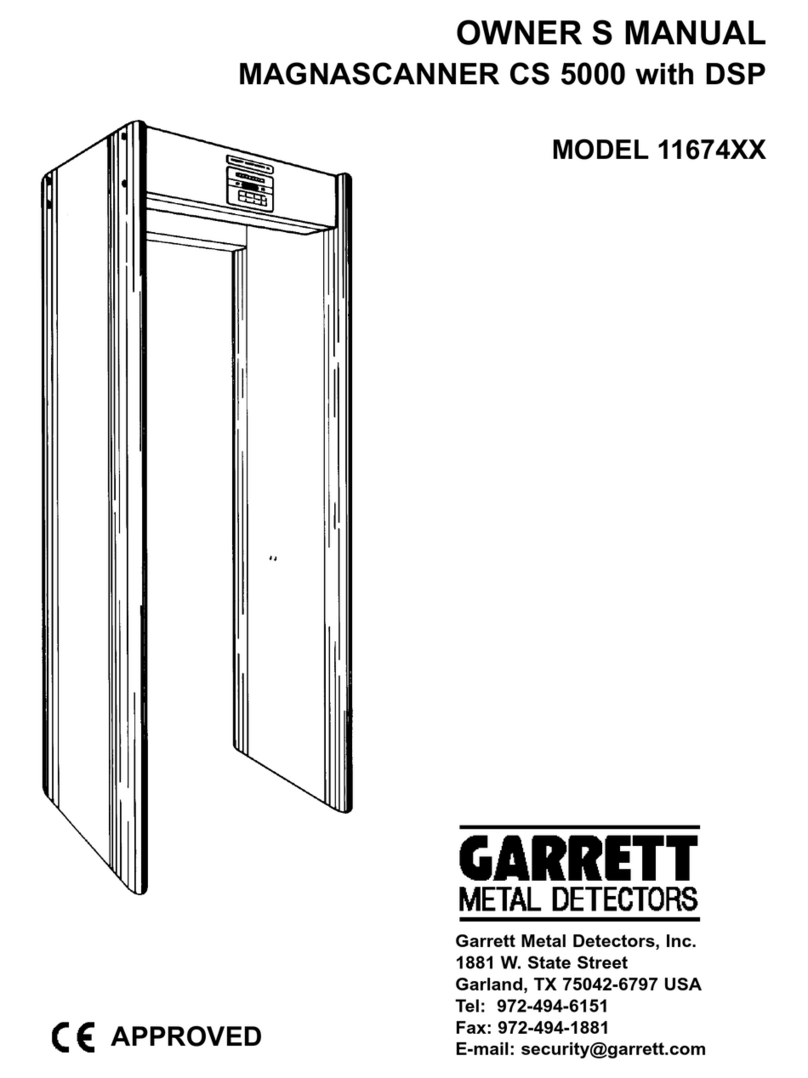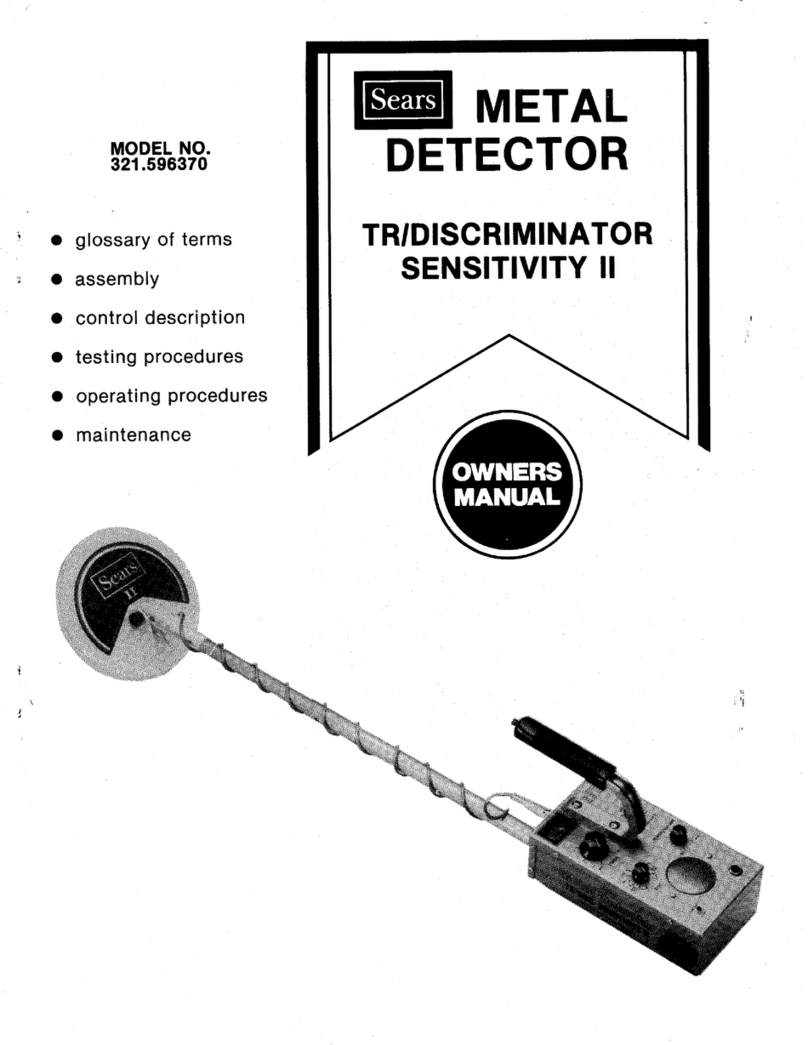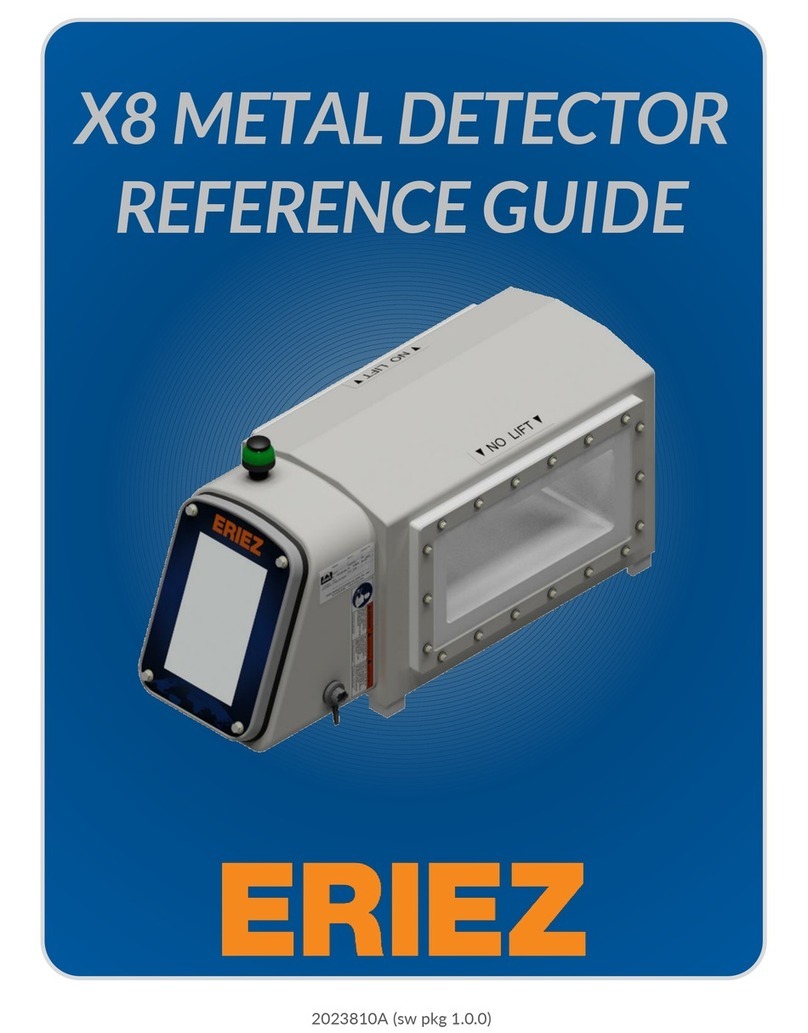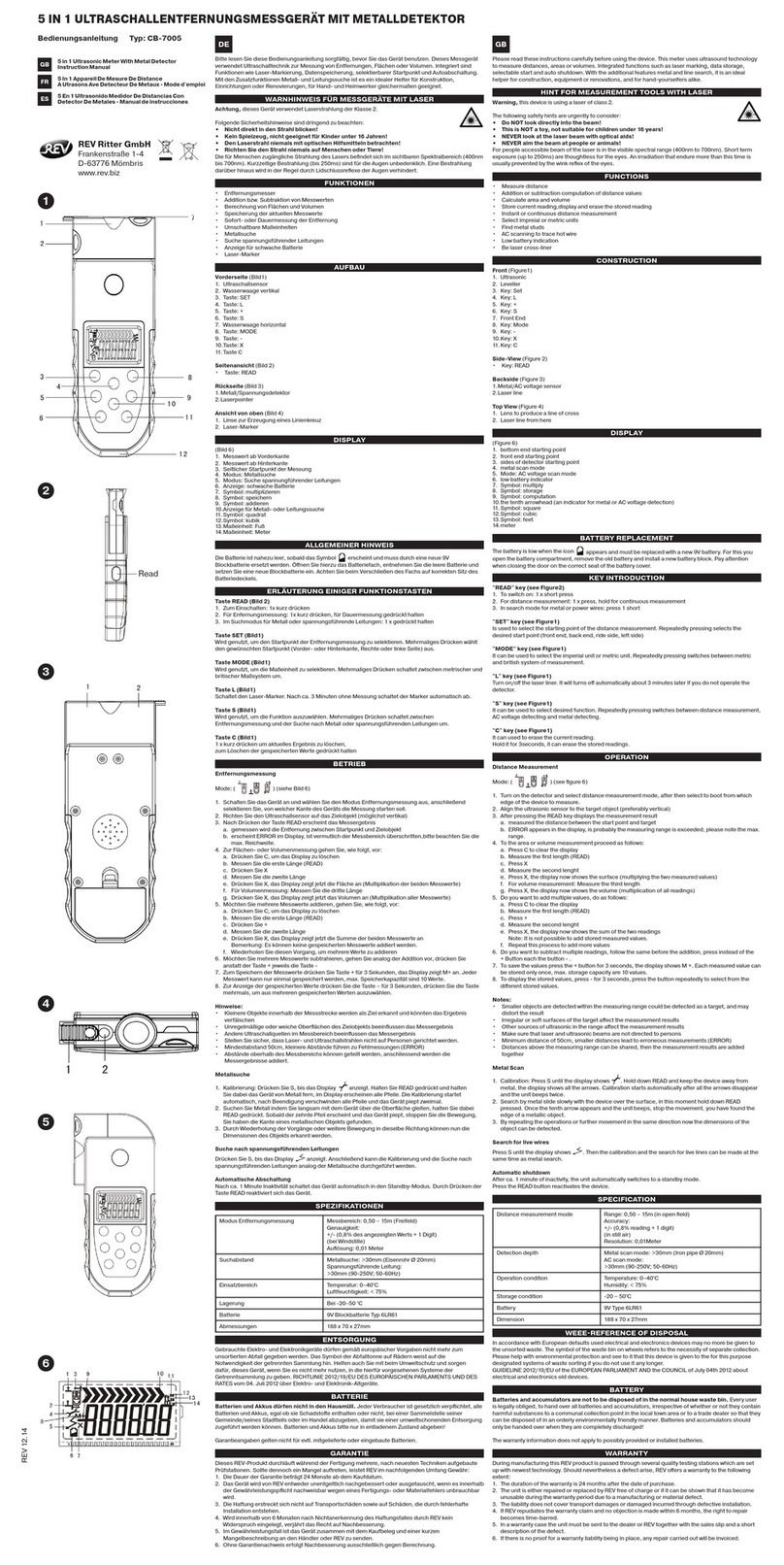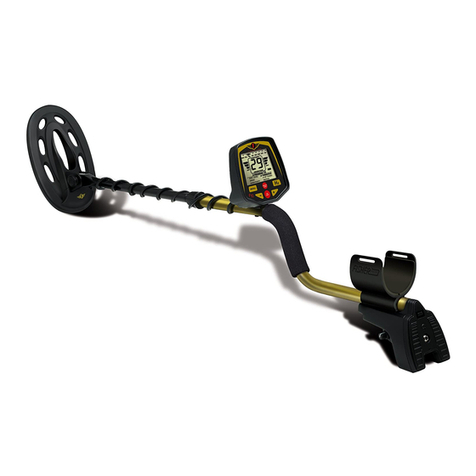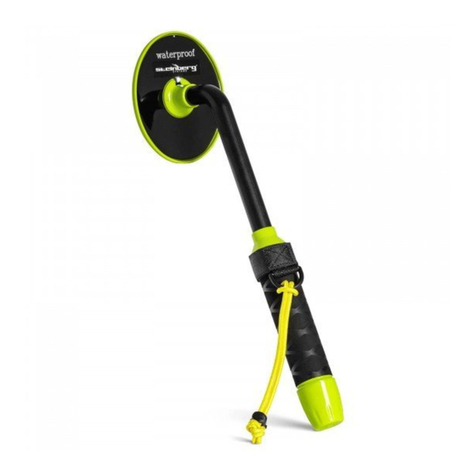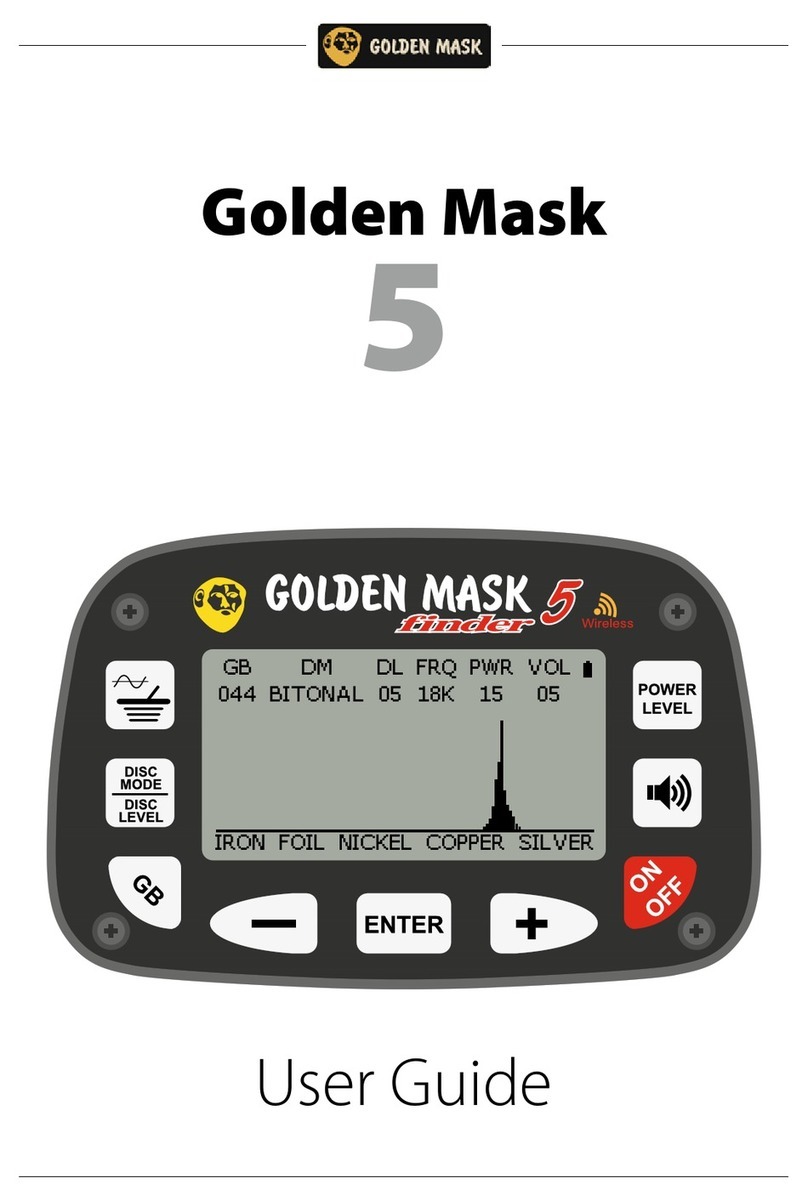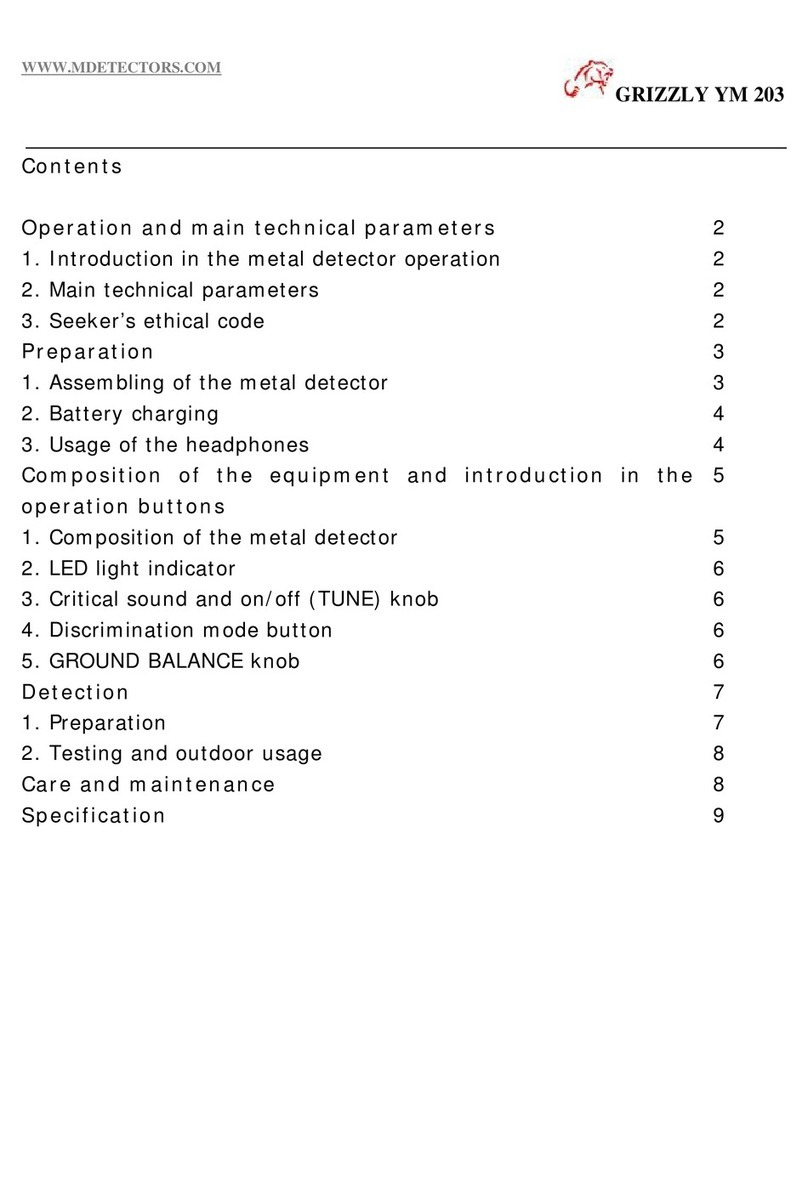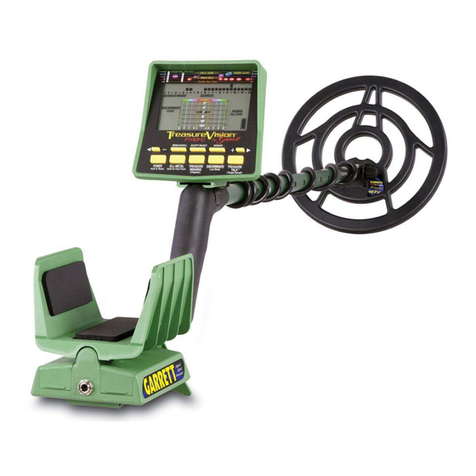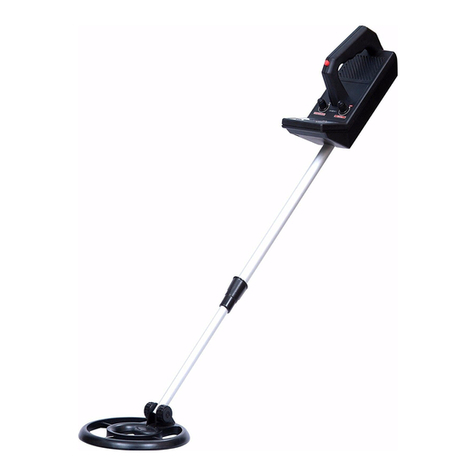
Specifications
Stem Length: 15” - 27-1/2”
Coil: 8” Diameter
Power Supply: Qty 3, 9 Volt Batteries
Battery Tester: Yes, built-in
Audio: 3 distinctive sounds for different metals
Weight: 3.25 Lbs.
Save This Manual
You will need the manual for the safety warnings and precautions, assembly instructions, operating
and maintenance procedures, parts list and diagram. Keep your invoice with this manual. Write the
invoice number on the inside of the front cover. Keep the manual and invoice in a safe and dry place for
futurereference.
Safety Warnings and Precautions
WARNING:Whenusingtool,basicsafetyprecautionsshouldalwaysbefollowedtoreducetheriskofpersonalinjuryand
damagetoequipment.
Read all instructions before using this product!
1. Handle the Metal Detector carefully at all times. Dropping the Metal Detector can cause damage to circuit
boards and the case, which can cause the product to work improperly.
2. Only use and store the Metal Detectorin normal temperature environments. Extremes in temperature can
shorten the effectiveness of electronic devices and melt or damage plastic parts.
3. Avoid electrical shock. Any metal detector may discover underground power lines, explosives or other items which
when struck could cause personal injury. Do not use this product in areas where there might be underground
electric lines or pipes buried at shallow depths. Never search in military zones where bombs or other explosives
may be buried. Avoid striking any line known or suspected to be carrying electric power. Do not search any
pipeline, particularly if it could contain a flammable gas or liquid. In areas of uncertain conditions, use reasonable
caution before using the Metal Detector. If there is any question about a condition being safe of unsafe, do not
operate the Metal Detector.
4. Keep the Metal Detector clean. Wipe the housing after each use. The search coil is washable and can be fully
submerged. Never submerge the control housing. Protect the control housing from rain, blowing surf and heavy
mist. Disassemble the stem and wipe it clean after use in sandy areas.
5. Dress properly. Do not wear loose clothing or jewelry as they can be caught in moving parts. Protective, electri-
cally nonconductive clothes and nonskid footwear are recommended when working. Wear restrictive hair covering
to contain long hair.
6. Use the right tool for the job. Do not attempt to force a small tool or attachment to do the work of a larger
industrial tool. There are certain applications for which this tool was designed. Do not modify this tool and do not
use this tool for a purpose for which it was not intended.
7. Stay alert. Watch what you are doing, use common sense. Do not operate any tool when you are tired.
#43149 Page 2

